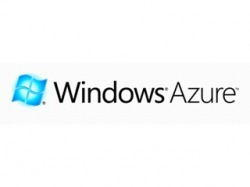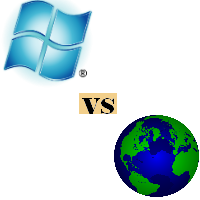 Apple CEO Steve Jobs at AllThingsDigital's D8 conference June 1 that Apple is not interesting in going into the search business and will not drop Google on its iPhone and iPad in favor of Microsoft's Bing. Broadpoint AmTech analyst Ben Schachter indicated Jobs comments should come as music to the ears of investors fearful that Apple might try to open a new battle front with Google in search. Search expert John Battelle doesn't believe the conversation is so cut and dry as Jobs made it sound.
Apple CEO Steve Jobs said a lot of interesting things on stage at AllThingsDigital's D8 conference June 1, but it's what he said about search that has pricked up the ears of some financial analysts.
Jobs swatted aside a couple of search-related rumors. He asserted that Apple is not interesting in going into the search business or dropping Google on its iPhone and iPad in favor of Microsoft's Bing.
Specifically, when asked about Apple's recent purchase of semantic search company Siri, Jobs said Siri was an artificial intelligence company, not a search company and noted:
"We have no plans to go into the search business. We don't care about it -- other people do it well." Asked about whether he would remove Google from the iPhone or iPad, Jobs said no.
Those statements come after rumors that Apple was formulating a deal with Microsoft to replace Google as the default search provider on its iPhone and iPad with Bing, or at least offer Bing as an option on the those devices. Jobs could make such an announcement at the Apple developer conference next week.
Broadpoint AmTech analyst Ben Schachter indicated Jobs comments should come as music to the ears of investors fearful that Apple might try to open a new battle front with Google in search.
"It is hard to interpret such comments as anything but a positive for Google," Schachter wrote in a research note June 3.
"We had been concerned that Apple might not just remove Google from Apple products, but that Apple could attempt to compete more directly with Google on search either through a proxy such as Microsoft or through the Yahoo strategy of focusing on the user interface of search and partnering with Microsoft for the indexing... If Jobs says that there are no plans to go into search, we take him at his word."
Search expert John Battelle doesn't believe the conversation is as cut and dry as Jobs made it sound.
In a June 2 blog post, Battelle explained how Apple will indeed offer search, just not the classic Web search platform consumers are used to from Google, Yahoo and Bing.
He believes Apple will forge a vertical search platform for the mobile applications his company sells for its iPhone and iPad.
Such an offering would be a boon at a time when users are struggling to find what the right applications in Apple's App Store, which boasts more than 200,000 apps.
"Apple will do search," Battelle said. "It won't be search as we understand it on the Web, but it'll be search for AppWorld, and if done right, it will be extremely profitable."
Battelle, who argues that we need to rethink how we view search, isn't alone in this sentiment. Piper Jaffray analyst Gene Munster wrote in a March 30 research note that Apple must build a special search engine to shield its application data from Google and others on the Web.
Apple may not be kicking Google search and other apps off of its iPhone or iPad, but it could construct a walled garden around its app data that could crimp Google's mobile ad plans for those popular devices.
In the meantime, there's already plenty of places for Apple to compete with Google in the mobile sector and that rivalry will heat up next week, where Apple is expected to launch the iPhone 4.0 and iAd platform at its developer conference next week.These products will pose significant challenges to Google's Android, AdMob and AdSense for mobile platforms.
Source : eWEEK.com
 Google CEO Eric Schmidt said the search engine will cede the data it accidentally collected over WiFi to regulators in Germany, France and Spain. Google will also publish the results of an external audit into its Street View data collection practice and will exact an internal review into all its privacy practices, releasing the results within the next month. Google's Street View cars unwittingly collected 600 gigabytes worth of fragmented e-mail, Web browsing and other data from unsecured WiFi networks in 33 regions.
Responding to the growing outcry over it privacy practices, Google CEO Eric Schmidt said the search engine will cede the data it accidentally collected over WiFi to regulators in Germany, France and Spain.
Google May 14 acknowledged that its Street View cars, which take pictures for Google Maps, unwittingly collected 600 gigabytes worth of fragmented e-mail, Web browsing and other data from unsecured WiFi networks.
This happened in 33 regions, including the United States, Ireland, Denmark, Germany, Hong Kong, Spain and France from 2007 until Google discovered the faux pas this year and said it ceased collecting WiFi data for good.
While Google deleted data in Ireland, Denmark and Austria it did not do so in Germany and other countries, citing the need to review privacy laws and other legal issues.
Google changed its tune, as Schmidt told the Financial Times June 3 that Google will hand over the collected WiFi data to German, French and Spanish data protection authorities within two days.
"We screwed up. Let's be very clear about that," Schmidt told the Times. "If you are honest about your mistakes it is the best defense for it not happening again."
Google will also publish the results of an external audit into its Street View data collection practice. The company will further review all its privacy practices, releasing the results within the next month.
Schmidt also claimed Google is conducting an internal investigation against the software programmer who created the code that collected the WiFi data, a violation of the company's rules.
A Google spokesperson confirmed the accuracy of the report with eWEEK but declined to provide additional information.
Cries of discontent over this flouting of user privacy are no quieter in the United States, where Federal Trade Commission Chairman Jon Leibowitz told Congress that his group would investigate the incident.
Reps. Joe Barton, Henry Waxman and Edward Markey wrote a May 26 letter to Schmidt saying they wanted to know how much personal data the company gathered from what has become known in some quarters as the WiSpy incident.
The so-called WiSpy incident is the second privacy firestorm Google must try to extinguish. The company launched its Google Buzz social conversation service in February, only to shock users by exposing their Gmail contacts to the public on Google profile page
Source : eWEEK.com
 Apple expected to unveil an updated iPhone rumored to offer video calling. Think talking on a cellphone in public is anti-social? Just wait. Soon, folks might be staring at their phones as well as mumbling into them. Video chat on mobile phones has arrived. On Friday, the HTC Evo 4G — the first U.S. phone able to access the speed-enhanced 4G cell network — went on sale, with Sprint Nextel as its exclusive carrier. Tapping the 4G network enables the Evo to do faster Web browsing and downloads, in addition to higher-quality video streams and the aforementioned video chat. Sprint is the first cell provider in the U.S. to roll out 4G service. But the honor of having the sole, mainstream video-chat phone could be short-lived. On Monday, Apple Inc. is expected to unveil an updated iPhone that is rumored to also offer video calling (although some rumors about new products from the super-secretive company always turn out to be false). Just how good can video chat be on a cellphone screen? Surprisingly terrific, judging from a test of the Evo. That is, after a lot of fussing. A couple of days before the phone went on sale, I did a video chat with Scott Steinmetz, Sprint's project manager for the product, who was in his Overland Park, Kan., office. It took much finagling to get the call to work, only partly because the system was not quite fully activated. To make a call work, both participants have to have a Google Gmail account, which is no surprise because the Evo's operating system is Google's own Android 2.1. Then you have to configure the Qik video app, which took some time to get up and working. Finally, after numerous attempts, Scott appeared on the screen of the Evo I was testing. His face was slightly elongated due to the lens on the phone's camera. But the image was so clear that I could comment on the Southwest-themed painting on his wall and antique slot machine in the background. Meanwhile, he could see the less interesting, blank wall behind me in my living room (I'm painting the interior). Most important, we could easily see each other's expressions, providing a reminder of how nice video chat can be. The small screen was not a major barrier. But there are three major caveats, two of which might be temporary. At this point, you can use video chat only with people who also have Evo phones. For a while, that probably won't be a lot of folks — the Evo is not cheap to buy or own. It costs $200 if bought with a two-year Sprint agreement. The data plan, which is unlimited, is $70 a month. And finally, it costs $10 extra a month to use the 4G network (more on that in a bit). Second caveat: Video chat works only at 4G speeds on cell networks, and Sprint has not rolled that out to all cities yet. One of the spots that does not have 4G is a little place called Los Angeles. It won't be here until later this year — the company would not specify just when. The Evo can also use Wi-Fi for calls, which is how I did them from home and the office. Finally, just how badly do we want video chat? It's handy on computers for business meetings, or for talking to loved ones far away. But in general, video calling has never much caught on. After the famed Picturephone was demonstrated at the 1964 World's Fair, futurists — as we now call people who make wild guesses — predicted that it would one day be part of daily life. It turns out that for most real-world calls, voice is just fine. Enjoy your status, Evo, as the leader in mobile video chat. The iPhone could be striving to take that away from you soon. Source :The Los Angeles Times
 NEW DELHI: Microsoft Corp sees India as the global hub for cloud computing, the concept of renting computing power that has taken the technology
world by storm and in the words of the NYT, what Silicon Valley cannot seem to get its head out of.
“India will not only see a surge in cloud computing services but companies all over the world will look to India to support their transition to cloud computing,’’ Microsoft CEO Steve Ballmer said on Thursday.
The world’s biggest software maker is among a handful of companies betting big on cloud services, aiming to convince enterprises to give up building and managing data centres and switch to their computer capacity instead; the others being rivals such as Amazon, Google and AT&T as well as smaller firms like Rackspace and Terremark.
Microsoft believes India will move directly to the cloud, much like it bypassed the landline revolution that never happened and leapt to mobile phones, Mr Ballmer told a packed press meet. Mr Ballmer is in India to underline the importance of the company’s cloud services platform Azure, wherein people can use applications from email to payroll systems hosted online.
The transition that India will champion will seed 3 lakh jobs in five years, during which the business is estimated to grow to $70 billion, Microsoft said, quoting a study by Zinnov Management Consulting. Jobs will be generated in areas like cloud consulting, enabling software as a service, integrating offerings like Azure with IBM’s Blue Cloud or salesforce.com’s customer applications on cloud, and creating new applications.
For Indian businesses too, there is great potential, given that 30%, or $7 billion, of the global cloud computing work is to be offshored, said the Zinnov study.
Microsoft already has more than 600 customers for its cloud services, but wants a deeper head start over rivals after catcalls of playing catch-up in other tech fields have been growing louder by the day. Indeed, Mr Ballmer was speaking to reporters a day after Apple overtook his company as the world’s biggest technology firm in terms of market value, more than a decade after he took over its reins.
The company is, therefore, sparing no efforts in making its cloud computing push a success in India, a market that is “developing very nicely”, where “piracy is reducing and intellectual property protection is better than in China”. Mr Ballmer also noted that India is among the top five or six countries in terms of talent and market potential.
Microsoft said cloud is important in India as it is a catalyst for IT adoption. “We are successful at exporting IT services and talent. But when it comes to using technology domestically, we are quite poor,’’ said Microsoft India chairman Ravi Venkatesan.
There isn’t much use of computers and technology in schools, homes, government offices or by the more than 4 million small and medium businesses.
Even so “this is changing and cloud will be a huge catalyst in enabling this wave of IT adoption”, Mr Venkatesan said, because of the affordability factor.
Microsoft must also be pleased with some of the changes in the segment are taking off from its platform. Companies such as Cognizant, NIIT, CDC Software and Indian Institute of Sciences, Bangalore, besides a host of independent software vendors, have developed training modules to applications on Azure. NIIT plans to train 1-lakh students on Azure in three years. Likewise, Cognizant has more than 400 engineers who have developed applications for healthcare and oil and gas sectors on the same platform.
Source : The Hindu Business Line

It’s been just over a week since Microsoft has started to offer the commercial subscription of Windows Azure. As a Cloud enthusiast, I quickly signed up for the Introductory Special subscription and downloaded the required tools to deploy my first app to the Cloud. I had access to Windows Azure since PDC08 and I deployed quite a few apps to test the functionality and features of the platform. As an independent Cloud Computing Strategist, I also explore Amazon Web Services and Google App Engine. Having worked on a few mature Cloud Computing platforms and tools, I had certain expectations from Windows Azure particularly after it has gone past the beta phase. Honestly, there is no significant difference (except the pricing part) that I could notice in the development and deployment experience on Windows Azure.Here is a list of top 5 things that I feel Microsoft should fix immediately. 5) Metering and Billing Model – Microsoft would start charging the moment you deploy your app even if it is not running and not consuming any resources. Refer to the FAQ on pricing for more details. I personally find this as a huge entry barrier. Ideally, I wouldn’t want to get charged when my app is in ‘Suspended’ mode and not in ‘Run’ mode. Technically speaking, what resources would my app consume when it is not running? It would only be a few megabytes of storage to keep the package and the configuration files. Amazon doesn’t charge me VM hours for inactive AMIs. They only charge me for the nominal storage cost of storing the AMI on S3. Charging VM hours for an idle application is just not convincing enough. I find it to be counterproductive and a barrier for developers to embrace this platform.4) Simpler Pricing and Subscription Plans – Microsoft is at it again! After confusing the consumers with half-a-dozen flavors of Windows Vista and recently with Windows 7, they are doing it to their Online Services subscribers. There are at least 4 types of subscription to choose from – Introductory Special, Development Accelerator Core, Development Accelerator Extended and ‘Pay As You Go’ Consumption. This bouquet of subscription offers is confusing and not a straightforward model. This reflects the classic Microsoft way of packaging and licensing products in the form of Express, Standard, Professional and Enterprise. This doesn’t gel with the online services model. I personally prefer the Amazon way of pricing and the sign up process. Simple and straightforward! 3) Agile Deployment and Faster Change Management – On the commercial version of Windows Azure, it takes more than 7 minutes for the application to be available and accessible. And, I am not talking of an Azure application built to assist NASA launch the Mars Rover. This is a plain and simple Hello World ASP.NET app that doesn’t even have a single line of server side code. Add a Worker Role, few lines of dynamic code and storage access code, it will take a good 10 minutes for your application to take off. Again, comparing this with Google App Engine and Amazon EC2, they are almost instant. Each Linux EC2 AMI takes about 2 min. to boot and I am at the root prompt in no time. Windows Azure is a PaaS offering and I cannot afford to wait for few minutes every time I make a trivial change to my HTML file. I can understand if Amazon forces me to go through this as I may have to bundle the AMI with every change that I make. With EBS now supporting booting AMIs, I need not even worry about bundling the AMI. Windows Azure might also be doing the job of spinning the new VMs for every change that I make to the app or the configuration. But I don’t care and cannot wait for 10 minutes for the simple changes to reflect. This needs to be fixed! 2) Configuration Editor – After you deploy the Cloud application, you may need to change the configuration settings. This includes changing the no. of instances of Web Role / Worker Role or changing a custom configuration setting. Having a plain vanilla textbox to change the sensitive configuration setting is just not acceptable! Microsoft has every reason to put up a better frontend to manage the configuration settings that can be potentially built using Silverlight. At least that will drive more downloads of Silverlight plugin. One look at the Configuration settings textbox makes me feel that I am working on an early CTP release. I consider the EC2 Console from Amazon (and a bunch of 3rd party tools like ElasticFox) and ElasticHosts’ configuration editor to be much better. Though Microsoft may want to encourage partners like RightScale to eventually build such tools, as a paid subscriber I deserve a better tool here!
1) Windows Azure Integration with Visual Studio – This certainly deserves to be the numero uno. The biggest USP of Microsoft is its integrated platform and tools approach. Whether it is core .NET Development, Microsoft Office Development, BizTalk Adapter Development or SharePoint Development, it has always been the ‘Better Together’ story for the developers by putting Visual Studio in the center. When it comes to Azure, I had a lot of expectations from Microsoft on the Visual Studio integration. The reason for that is Azure is logically an extended development platform on the Cloud and the developers should be able to seamlessly deploy their new breed of applications. To my surprise, Windows Azure Tools for Visual Studio 2008 1.1 has little to no integration with the real Azure platform. When I right click on the Cloud Service project and select Publish, I expected Visual Studio to prompt me for my Windows Live ID to enumerate the Hosted Service project to seamlessly deploy the app onto Azure and then take me to the Development Portal to let me decide between staging and production. The approach of opening an Explorer window with the folder containing the .cspkg and .cscfg files and launching the browser with the Azure development portal appears to be so broken! Compare this with the Eclipse and the Google plugin integration. Two independent entities coming from different companies offer a better experience to the developers than Azure Tools for VS. When I click on the GAE button on Eclipse toolbar, it just does the deployment after prompting me for the Google ID and the Application ID. I am not sure if this would get fixed in Visual Studio 2010. But as of now, on the currently available Visual Studio 2008 SP1, it is not in place. I want Visual Studio to fully support me end to end during my Cloud application design, development, testing and deployment. I also expect an integrated Azure Storage tool within Visual Studio. I should be able to browse and manipulate the Tables, Blob metadata and the Queues. Today I have to rely on 3rd party tools for this which doesn’t make the developer productive. Overall, Visual Studio and Azure integration has a long way to go!
source : MSV
 According to Wikipedia, an unmanned aircraft system or unmanned aerial vehicle is an aircraft that flies without human crew on board the aircraft. … a UAV is defined as a reusable, uncrewed vehicle capable of controlled , sustained, level flight and powered by a jet or reciprocating engine.
So, what is the difference between an application running in your datacenter and an application running on the Cloud? Well, it is as different as an aircraft flown by a pilot and an unmanned aircraft system. Interestingly, both the Cloud application and the UAS share the same attributes! When you are running an enterprise application hosted at the datacenter in your backyard, you have a lot of liberty in controlling it. You can monitor it closely to track the performance and it is fairly easy to fix the bottlenecks. Same is the case with an aircraft flown by a professional pilot. He can determine the right altitude and the direction based on the wind speed and the weather conditions. The pilot will take every step to make sure that the flight is as safe as possible.Running the same enterprise application on the Cloud is no different from flying an unmanned aircraft. You never know which server, datacenter or the continent that hosts your application. For the UAS, imagine the challenges involved in accurately gauging the external factors like the wind speed, direction and the altitude. The external factors that define the smooth operation of the Cloud application are traffic, resource usage and security. You got to tweak the application to meet these demands on the fly!Whether it is the Cloud application or the unmanned aircraft system, they need a sophisticated control center for remote operations. Apart from the remote control center, the constant communication between the control center and the UAS is very critical. UAS Control CenterThough it is obvious that most of the Cloud offerings expose ‘Compute’ and ‘Storage’ services, there is another crucial service which is the ‘Management’ service. This service connects your Cloud App with the control center at your end. By consuming this service, you will be able to tweak your application to meet the external conditions.
Key Services Exposed by Cloud
Amazon Web Services offer a mature API to take control of the infrastructure that runs your application. Microsoft Windows Azure Platform has a Service Management API that lets the developers programmatically control the Cloud application’s parameters.
source : Janakiram (Microsoft)
 SalesForce.com and VMware jointly announced a new PaaS offering called VMforce. This is a huge announcement that has a very strong impact on the Cloud ecosystem. Let’s see what it means to us. The enterprise application development platform is dominated by two obvious platforms – .NET and Java. I qualified my statement with the ‘enterprise’ keyword because other platforms like LAMP, Ruby on Rails, Python are great for consumer web apps and they are not the first choice for building the Line of Business (LoB) applications. So, when the enterprise wants to seriously look at the Cloud, they want a platform exposing either .NET or Java as a service. The application platform on the Cloud is technically called as the Platform as a Service (PaaS). Till date, PaaS is typically associated with Microsoft’s Windows Azure Platform, Google App Engine and Force.com. Windows Azure is the preferred platform for all the .NET developers. In the last one year, Microsoft’s continuous investments in Azure made it comprehensive and mature for the businesses to go live on the Cloud. Java developers had to settle for the limited capabilities offered by Google App Engine. Right from the day of announcement of Java runtime on App Engine, Google did very little to entice the Java community. Moving an enterprise Java app to GAE is not really straight forward. GAE doesn’t support all the capabilities of Java EE. Even for the web applications, there are quite a few constraints that force the developers to re-factor the application to run on GAE. Moving an app back and forth from the local datacenter and GAE is not easy. So, there has been no comparable PaaS offering to Azure for Java developers. In one of my articles, I covered how Sun lost the opportunity of delivering the Java PaaS to the community. This gap is now being filled by VMforce. They want to make VMforce the defacto Cloud platform for Java developers. VMforce for Java developers would be what Azure is for .NET developers. VMforce PaaS Offering
But why did VMware join hands with SalesForce.com? VMware has a proven stack for the Cloud in the form of vSphere and vCloud. They never wanted to compete directly with the IaaS providers like AWS or GoGrid. Instead, VMware wants to capture the Private Cloud market by aggressively competing with Microsoft and others. On the other hand, SalesForce.com has been in Cloud services business for a while and has become synonymous with SaaS. They also started to expose the middle tier that powers their CRM through the force.com PaaS offering. SalesForce.com has the right level of infrastructure that is ready to scale. But just virtualization combined with the right infrastructure doesn’t offer an exciting platform for the developers. VMware made two strategic investments last year. They acquired a Java framework and tools company called SpringSource and a Message-Oriented-Middleware (MOM) company called RabbitMQ. This investment made VMware ready for a complete platform offering. Just like VMware brings an abstraction layer between the real hardware and the OS, SpringSource adds a layer between Java runtime and enterprise applications. Java developers targeting SpringSource can easily move apps across multiple environments. Message Queuing is very important for enterprise application scalability. The combo of SpringSource and RabbitMQ offer a powerful and scalable enterprise Java environment. Now, when we look at the equation, it becomes pretty interesting. VMware offering the SpringSource framework for the on-premise servers and the Private Cloud that can be further extended to the Public Cloud hosted on SalesForce.com. Add the LoB components, the multi-tenant capability, enterprise database and the UI widgets that are already a part of force.com, they have a pretty solid PaaS in the making. Deployment Scenarios
Who should be worried about this announcement? It is Google! They have a serious contender in VMforce. As a developer, I prefer setting up SpringSource environment on my local machine and use Eclipse to seamlessly deploy across my local server, Private Cloud or on the VMforce Public Cloud. I need not heavily re-factor my applications for the Cloud anymore. Relying on a proven Java framework like Spring gives the developers the confidence to standardize their apps across multiple deployment environments. But, should Microsoft be worried about this announcement? Yes. But not as much as Google! Microsoft did the right thing by bringing .NET to the Cloud early and helping the developers make a smooth transition. For any Microsoft shop, the first choice is Azure and Microsoft will continue to lead in that space.
source : Janakiram (Microsoft)
 The landscape of the application development platform is divided into two – .NET and Java. When Microsoft announced .NET a decade back, I expected that they would officially come out with an Application Server to compete with the Weblogic and the Webspheres of the world. But Microsoft’s pitch has always been that Windows Server has it all! Every instance of Windows Server can be enabled for an ‘Application Role‘ which includes Web Server (IIS), Development Runtime (.NET), Enterprise Services (COM+), Message Queuing (MSMQ) and Web Services (WCF). Borland (Borland ES), IBM (WebSphere), Sun/Oracle/BEA (Glassfish, OC4J & WebLogic), Redhat (JBoss), SAP (NetWeaver) and others like Apache (Geronimo) created a niche market for J2EE Application Servers offering the application services running within the Java context. Any enterprise customer deciding to deploy an Application Server will first zero-in on the development platform. If it is Microsoft, the choice is simple; it is Windows Server. But, if the enterprise application is Java based, then there are quite a few Application Servers to choose from. So, the Application Server market is primarily divided between .NET and J2EE. Fast forward this to 2010 and I feel this is pretty much repeated in the Cloud within the PaaS landscape. After announcing a partnership with SalesForce.com, VMware has made another huge announcement at the Google I/O event. Google App Engine now supports Spring framework powered by VMware! I always complained that Google’s App Engine is limited in its capability and the massive re-factoring that has to be done for porting an application to GAE. With Google and VMware springing (pun intended) the surprise, both these concerns are addressed. Now any Java developer can download and setup the Spring environment on his/her machine and then target Google App Engine for deployment. When I first read about VMware’s Open PaaS vision, I have to admit that I didn’t take it too seriously. But now that they are on a signing spree with the partners to support Spring on their respective Cloud environments, it looks very promising. Every Java developer can now choose to deploy either on SalesForce or Google App Engine. I have a feeling that VMware is talking to IBM, Oracle and others who have the potential to make it big on the Cloud. What is more exciting is that the enterprises can setup a Private Cloud running on VMware’s VSphere running the same PaaS and then deploy and switch across multiple Cloud vendors. If VMware succeeds in convincing every major Java PaaS vendor to support Spring, it can safely claim to have created an Open PaaS platform. Spring insulates the Java Cloud applications from the underlying PaaS and brings in portability. This delivers the much talked about Cloud Portability at least in the Java PaaS environments. Five years from now, the PaaS world would be again divided between Microsoft (Windows Azure) and rest of the world (Java PaaS potentially powered by Spring).
source : Janakiram (Microsoft)
|








 RSS Feed
RSS Feed